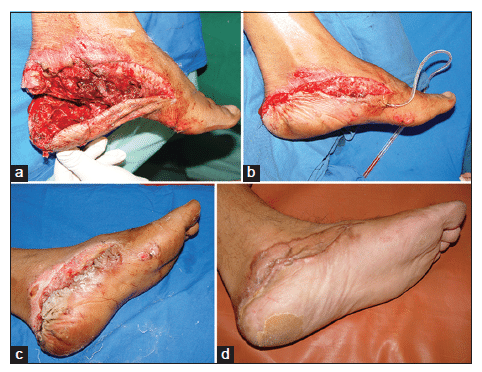
What are Heel Pad Avulsions?
Heel pad avulsions occur when the thick, cushioned tissue on the bottom of the heel, known as the heel pad, is partially or completely torn away from the underlying structures. This can result from traumatic injuries, such as falls, accidents, or excessive pressure on the heel, leading to pain, swelling, and difficulty walking.
How are Heel Pad Avulsions treated?
The treatment of heel pad avulsions depends on the severity and extent of the injury. In milder cases, treatment may involve rest, ice, compression, and elevation (RICE therapy) to reduce swelling and pain. For more severe avulsions or complete tears, surgical intervention may be necessary to repair or reattach the heel pad to the underlying tissues.
Who is a candidate for treatment of Heel Pad Avulsions?
Individuals who have sustained heel pad avulsions, whether due to traumatic injuries or other causes, may be candidates for treatment. Common symptoms of heel pad avulsions include pain, swelling, bruising, tenderness, and difficulty bearing weight on the affected heel. A consultation with a qualified healthcare provider is essential to determine the extent of the injury and recommend appropriate treatment.
What are the benefits of treating Heel Pad Avulsions?
Treating heel pad avulsions offers numerous benefits for individuals seeking to recover from traumatic injuries or conditions affecting the heel. Proper treatment can help alleviate pain, reduce swelling, promote healing, and restore function and mobility to the affected heel. By addressing heel pad avulsions promptly and effectively, individuals can return to their normal activities with minimal discomfort and improved quality of life.
What is the recovery process like after treatment of Heel Pad Avulsions?
Recovery from heel pad avulsions can vary depending on the severity and extent of the injury, as well as individual healing factors. Patients may require immobilization, physical therapy, or occupational therapy to regain strength, mobility, and function in the affected heel. It's essential to follow post-treatment instructions provided by the healthcare provider, including activity modifications and follow-up appointments to monitor healing and address any complications.
What are the risks and complications associated with treatment of Heel Pad Avulsions?
Like any medical procedure, treatment of heel pad avulsions carries certain risks and complications. These may include infection, bleeding, delayed wound healing, nerve damage, or loss of function in the affected heel. Additionally, individuals with severe heel pad avulsions may be at increased risk for long-term complications such as chronic pain, disability, or recurrence of the injury.
Why Choose Samarpan Hospital for Treatment of Heel Pad Avulsions?
Samarpan Hospital in Hisar, Haryana, is a trusted provider of comprehensive care and treatment for individuals with heel pad avulsions. Our team of skilled healthcare professionals has extensive experience in managing traumatic injuries, including heel pad avulsions, ensuring timely and effective treatment to optimize outcomes. With state-of-the-art facilities and a multidisciplinary approach, Samarpan Hospital is committed to delivering compassionate care and helping patients recover from heel pad avulsions.